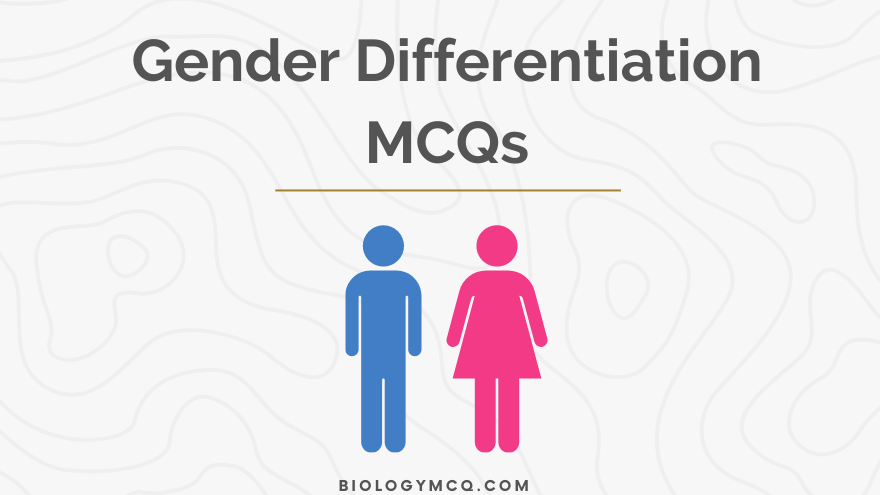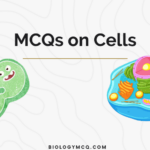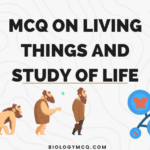Study and Learn with 1000s of Biology MCQs
Gender Differentiation MCQs (in humans)

Our multiple-choice questions (MCQs) on gender differentiation explore various aspects of this process, covering topics such as sex determination, hormonal regulation, sexual development, and gender identity.
Answering these MCQs will not only help you grasp the complexities of gender differentiation but also deepen your understanding of human biology and psychology.
Let’s begin by exploring the MCQs below and expanding your knowledge of this fascinating topic!
MCQ on Gender Differentiation
Humans remain in indifferent stage until about _ after fertilization
2 months
6 days
seven weeks
3 months
seven weeks
__ eventually become the male vas deferens, epididymis (on the testes), and seminal vesicles
Wolffian ducts
Müllerian ducts
Both of these
None of these
Wolffian ducts
_ eventually become the oviducts, uterus, and vagina
Wolffian ducts
Müllerian ducts
Both of these
None of these
Müllerian ducts
Gender differentiation refers to the process by which individuals develop characteristics associated with their biological sex, including physical, behavioral, and psychological traits.
This process occurs during prenatal development and continues throughout life, influenced by genetic, hormonal, and environmental factors.
A gene called _ is the specific gene that determines maleness
PTR
SRY
UAG
onco
SRY
SRY contains the blueprint for a protein called _, which is a transcription factor that interacts with DNA to turn on the transcription of the genes necessary for testes development
TDF
SWE
UAD
None of these
TDF
_ supports the development of the male reproductive system and directs development of external genitalia
Oxytocin
Estrogen
melatonin
Testosterone
Testosterone
The tubules necessary for ejaculation of semen are complete at about _ of gestation
2 weeks
14 weeks
2 months
5 months
14 weeks
External female structures are completed between _ of gestation
2 and 4 weeks
20 and 26 weeks
14 and 16 weeks
30 and 32 weeks
14 and 16 weeks
Problems with sexual development include _
Turner syndrome
Klinefelter’s syndrome
Androgen insensitivity
All of these
All of these
A male who can’t develop external male genitalia has?
Turner syndrome
Klinefelter’s syndrome
Androgen insensitivity
All of these
Androgen insensitivity
Males with _ have two X chromosomes and one Y chromosome
Turner syndrome
Klinefelter’s syndrome
Androgen insensitivity
All of these
Klinefelter’s syndrome
Males with _ tend to be taller; they may also have feminizing characteristics such as enlarged breasts
Turner syndrome
Klinefelter’s syndrome
Androgen insensitivity
All of these
Klinefelter’s syndrome
The genetic disorder, which leaves females infertile is?
Turner syndrome
Klinefelter’s syndrome
Androgen insensitivity
None of these
Turner syndrome
Turber syndrome can occur in _ ways
4
6
8
2
2
Women with _ are often shorter than other women, may have extra folds of skin around the neck, and may fail to enter puberty
Turner syndrome
Klinefelter’s syndrome
Androgen insensitivity
None of these
Turner syndrome



